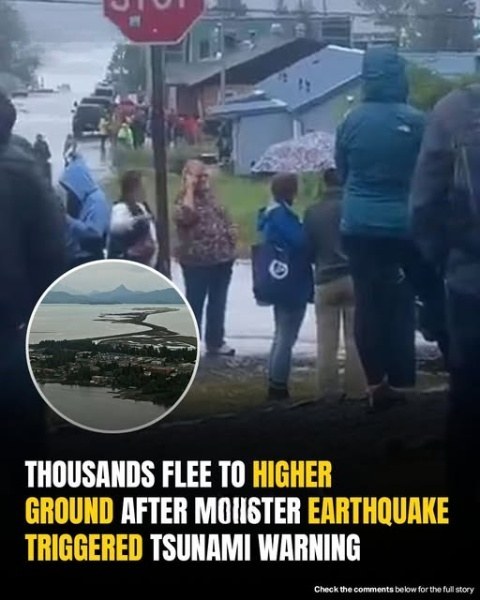Thousands of Americans are bracing for a tsunami 🚨 Read more 👇😨
On Wednesday, a powerful 7.3-magnitude earthquake struck off the southern coast of Alaska, triggering panic and a tsunami warning that sent thousands fleeing to higher ground. The quake’s epicenter was in the Pacific Ocean, southeast of Sand Point near the Shumagin Islands. Sirens blared and emergency alerts lit up phones across southwestern Alaska, from Homer to Unalaska, urging residents to evacuate immediately.
Images captured empty shorelines as the ocean receded—a classic and alarming sign of a potential tsunami. While a tsunami was confirmed, it only caused minor sea level changes of around three inches. Within 90 minutes, the warning was downgraded and then canceled. However, authorities urged continued caution due to possible aftershocks and lingering wave activity for the next 24 hours.
Emergency shelters were opened in Kodiak, and small coastal towns like King Cove issued local evacuation orders. In Seward, one resident shared a video of people racing inland, nervously praying for safety.
The Alaska Earthquake Center reported more than 20 aftershocks, with the strongest reaching magnitude 5.2. Seismologist Michael West emphasized that while Alaska experiences frequent quakes, events of this size are rare. Still, Alaska accounts for four out of every five earthquakes in the U.S.
Fortunately, the quake did not lead to significant damage or widespread flooding, and no tsunami threat extended to the lower 48 states. Officials compared the event to past major quakes, including the 1964 Great Alaska Earthquake—the strongest in U.S. history.






Post Comment